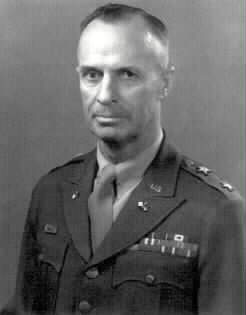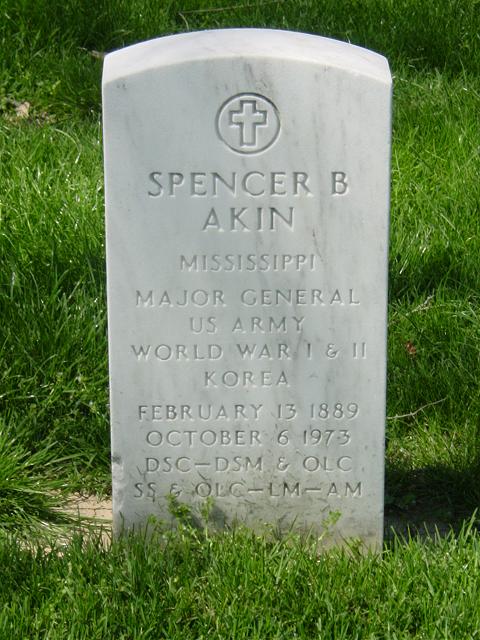Courtesy of the United States Army:
Major General Spencer B. Akin, Chief Signal Officer, 1947-1951, accompanied General Douglas MacArthur from Corregidor through the initial military government in defeated Japan at the close of World War II. Before Corregidor and Bataan fell, Akin’s radio program, the “Voice of Freedom,” broadcast to the world, three times daily, that the two islands were holding.
As MacArthur’s Chief Signal Officer throughout World War II, Akin exercised strong control by being in the forefront of each operation. This sometimes irritated others. Sixth army troops, including their commander, Lieutenant General Walter Krueger, complained that mobile communications clogged Highway 3, with a long column of heavy Signal Corps’ vehicles, during the recapture of Manila near the end of the war.
As Chief of Signal Intelligence in the Far East and of Army forces in the Pacific, Akin exploited the Japanese reliance on radio communications by keeping commanders appraised of pertinent information. In one instance, an intercepted enemy radio message revealed that, expecting bombing raids, the Japanese had issued orders to move airplanes from a vulnerable airfield to a safer location. The Army Air Force used the information to attack before the move could be made, destroying large numbers of enemy aircraft. Akin’s intelligence services crossed service boundaries. At Admiral Halsey’s request, a Signal intelligence detachment was placed on his flagship. Vice Admiral Raymond A. Spruance, as commander of the Fifth Fleet in the southwest Pacific, kept Signal specialists on duty with him at all times.
During 1944, radio relay equipment proved itself more vital in the Pacific then in Europe. By November of 1944, message traffic, in that theater of war, was more than a million groups per day. In addition to wire communications, Akin equipped a small Signal Corps’ fleet, a flotilla of small vessels, including schooners, ketches and barges, with radio. At first they served as relay ships, but soon became forward command post communications sites, Army Command and Administrative Network
(ACAN) stations, and communications supply depots. Their support was so coveted that Army elements continually competed to obtain their services.
When elevated to Chief Signal Officer of the U.S. Army in 1947, Akin had earned, among other awards, the Distinguished Service Cross and Silver Star, both for gallantry in action in 1942 and the Air Medal and Legion of Merit, both in 1946. Major General Akin retired in 1951. He died on 6 October 1973 and is buried in Arlington National Cemetery.
Michael Robert Patterson was born in Arlington and is the son of a former officer of the US Army. So it was no wonder that sooner or later his interests drew him to American history and especially to American military history. Many of his articles can be found on renowned portals like the New York Times, Washingtonpost or Wikipedia.
Reviewed by: Michael Howard


